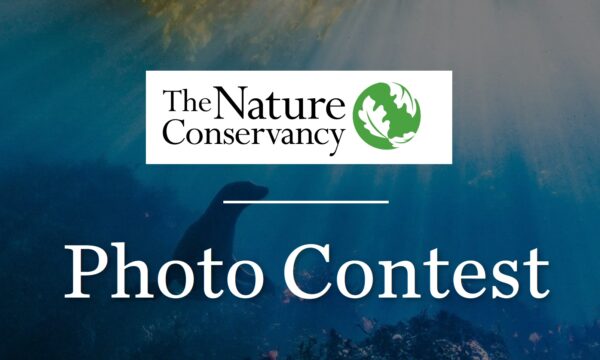Deadline: 29 September 2023
Applications are now open for the Nature Conservancy Photo Contest 2023 . The Global Photo Contest is an opportunity for you to give nature a voice by sharing what you see with others around the world. Join a community of photographers who are passionate about the environment, show your work to industry experts and win great prizes.
Categories
A single category must be selected when submitting an entry to the Photo Contest. Entries from the following categories will be considered:
- People and Nature: Portraits of individuals connecting and interacting with their environment. The images can be a person or people in an outdoor environment or present the impact of people on nature, such as a building or other man-made construction. Images can also feature people interacting with each other while in nature or interactions with animals or plants.
- Plants and Fungi: Portraits of any plant or fungus in its natural environment. The images should highlight their ecological roles and importance, unique characteristics or incredible beauty. Includes flowers, trees, shrubs and vegetation in general, as well as lichen and fungi such as mushrooms.
- Mammals: Portraits of mammals in their natural environments that capture their behaviour, habitats or relationships with each other or with other species. Images of domestic animals and captive animals photographed in Zoos and Commercial Hunting Farms are not permitted.
- Birds: Portraits of birds in their natural environments that capture their behaviour, habitats or relationships with each other or with other species. Images of domestic animals and captive animals photographed in Zoos and Commercial Game Farms are not permitted.
- Reptiles and Amphibians: Portraits of reptiles and amphibians in their natural environments that capture their behaviour, habitats or relationships with each other or with other species. Includes, but not limited to, snakes, lizards, turtles and tortoises, and crocodilians, as well as frogs, toads, salamanders and newts. Images of domestic animals and captive animals photographed in Zoos and Commercial Game Farms are not permitted.
- Insects and Arachnids: Portraits of insects and arachnids in their natural environments that capture their behaviour, habitats or relationships with each other or with other species. Includes, but is not limited to, bees, butterflies, beetles, grasshoppers, spiders and scorpions.
- Underwater Life: Portraits of aquatic life in their natural environments that capture their behaviours, habitats or relationships with each other or with other species and highlight the ecological importance of aquatic ecosystems. Images can include aquatic animals or plants, as well as interactions in larger ecosystems such as coastal mangroves and coral reefs.
- Land: images that capture mountains, hills, deserts or forests. The images can include people or wildlife, but the main focus should be the land.
- Oceans: Images that capture the larger ocean. This includes images above the ocean's surface, such as waves, or below, capturing a wider view of ocean life. Images can include people or wildlife, but the main focus should be the ocean.
- Fresh water: Images that capture freshwater bodies and systems. The images should feature lakes, rivers, ponds, waterfalls or the life they sustain. They can be landscapes or depict wildlife, such as freshwater plants, animals or their interactions in the environment.
- Climate: Images that capture our changing world and highlight the causes and effects of climate change. It could show visual impacts of climate change, extreme weather events, interactions between climate change and nature, or humanity's place in our current climate. While demonstrating the consequences of climate change, images can also portray efforts towards climate resilience and mitigation.
- Airlines: Images that capture our world from a panoramic view while highlighting patterns of land or water. Images can be taken with drones or aircraft. The photographer must comply with local laws and regulations governing the use of drones and aircraft.
Prizes
All award winners may receive mention on The Conservancy's digital presences, as determined by The Conservancy in its sole discretion. In addition, The Conservancy and, where applicable, its corporate awards provider(s), will award the following prizes:
- One (1) Grand Prix winner will receive: US$ 5,000 camera kit or camera kit gift voucher, as determined by The Conservancy in its sole discretion.
- Twelve (12) first-place category winners (one (1) per category) will receive: US$ 1,000 gift voucher from Amazon, Mercado Libre or Alibaba, as determined by The Conservancy in its sole discretion.
- Twelve (12) second-place category winners (one (1) per category) will receive: US$ 500 gift voucher from Amazon, Mercado Libre or Alibaba, as determined by The Conservancy in its sole discretion.
- Twelve (12) third-place category winners (one (1) per category) will receive: US$ 250 gift voucher from Amazon, Mercado Libre or Alibaba, as determined by The Conservancy in its sole discretion.
Eligibility
- Open to all professional and amateur photographers who have reached the age of majority in their jurisdiction of residence at the time of entry.
- Directors, board members, employees, interns or partners of The Nature Conservancy, as well as the immediate family (spouse, parents, siblings and children) and family members of these individuals, are not eligible to participate.
Application
The Photo Contest closes at 23:59 GMT on 29 September 2023. Entries submitted after the Entry Period will not be eligible.


